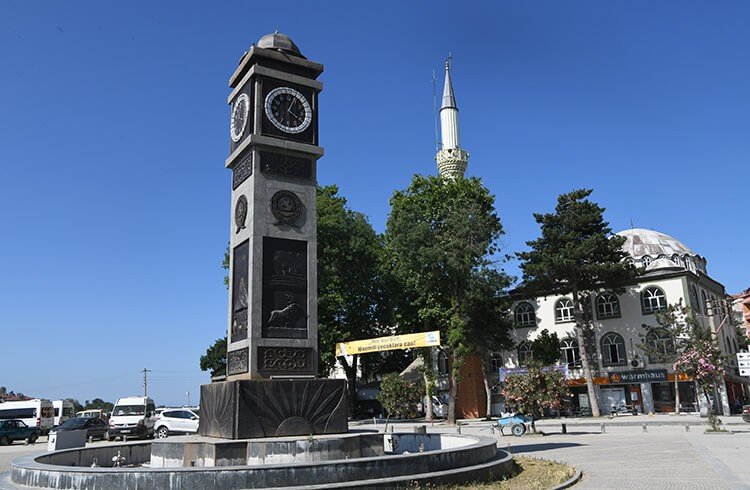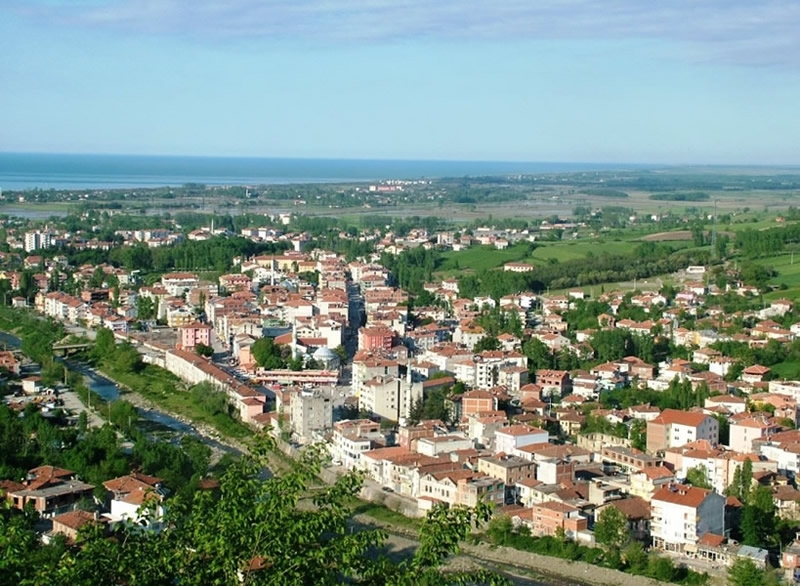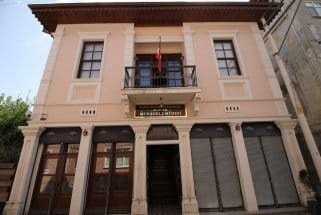Alaçam
Alaçam is a district of Samsun province, surrounded by Yakakent from the west, Vezirköprü from the south, Bafra districts from the east and the Black Sea from the north. Its surface area is 632 km² and its average height above sea level is 15 m. The distance to Samsun is 78 km. The history of Alaçam dates back to 5500 BC (Middle Bronze Age). During the archaeological excavations carried out in Alaçam, settlements dating back to the Hittite period BC (1600-BC 1178) were identified in Sivritepe, Dedetepe and Gökçeboğaztepe. There are written records showing that the city existed from the late classical period (4th century BC) to the 14th century. The Miletians who came to the region in the 7th century BC named the district Zalikus-Zalekon. It is thought that Zalekon was founded by the Miletians in the 7th century BC. Marcian of Heraclea mentioned Alaçam as Zalykos in his work written in the 4th century. It is mentioned as a city without a port next to the Zalykos River. Heirocles (6th century) named the city Saltos Zalihis. Paphlagonia is mentioned as a city surrounded by forests. Ramsey in his book History and Geography of Asia Minor, written in 1890. While talking about the Helenopontos region, he mentioned Leontopolis as follows: "More precisely defined. Helenopontos included three cities on the west bank of the Halys (Red River). Sinope, Leontopolis, generally called Zalikhos or Saltus Zalichenus (Zalich Forest). B.C." Phrygians, Cimmerians, Lydians and Persians ruled in Alaçam during the periods. Roman rule began in the 1st century BC in the region, which was later annexed by the Kingdom of Pontus. After the division of the Roman Empire into two, it remained in the hands of Byzantium during the reign of Leo I (457-74). ) was named Leontopolis in honor of the ruler. The city is one of the few settlements on the Black Sea coast where the names of the Classical and Byzantine periods have survived to the present day. It was later captured by the Danişmends and named Tralköy. During the Seljuk period, the name of Tralköy was changed to Uluköy, and in 1385, during the Ilkhanid period, the district was named Alaçam. It is said that the name Alaçam comes from the large pine trees called "Uluçam" on the edge of Uluçay, which passes through the middle of the district. During the Anatolian Principalities period, Alaçam was captured by Kadı Burhanettin, who was the continuation of the Eretna Principality, and then came under the rule of Candaroğulları and İsfendiyaroğulları (1390). Alaçam, which came under Ottoman rule in 1398, passed into the hands of Candaroğulları again in 1402 with the collapse of the Anatolian Turkish Union. With Çelebi Mehmet's capture of the Canik Region, Alaçam became Ottoman's and this domination continued until II. It was strengthened during the reign of Murat. Alaçam, which has been a Turkish town since the Ottoman period, became the eighth district of Samsun on September 1, 1944. Government Mansion was built in 1963, Şadi Bey Mosque was built in 1515, and Çarşı Mosque was built in 1887. Alaçam Secondary School was opened in the 1950s, and the Alaçam-Bafra road was built between 1901-1902.







Leave Your Comments